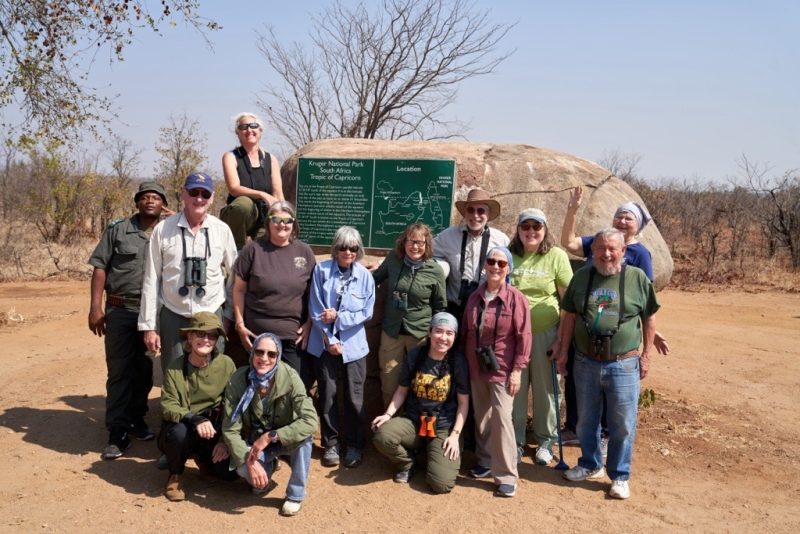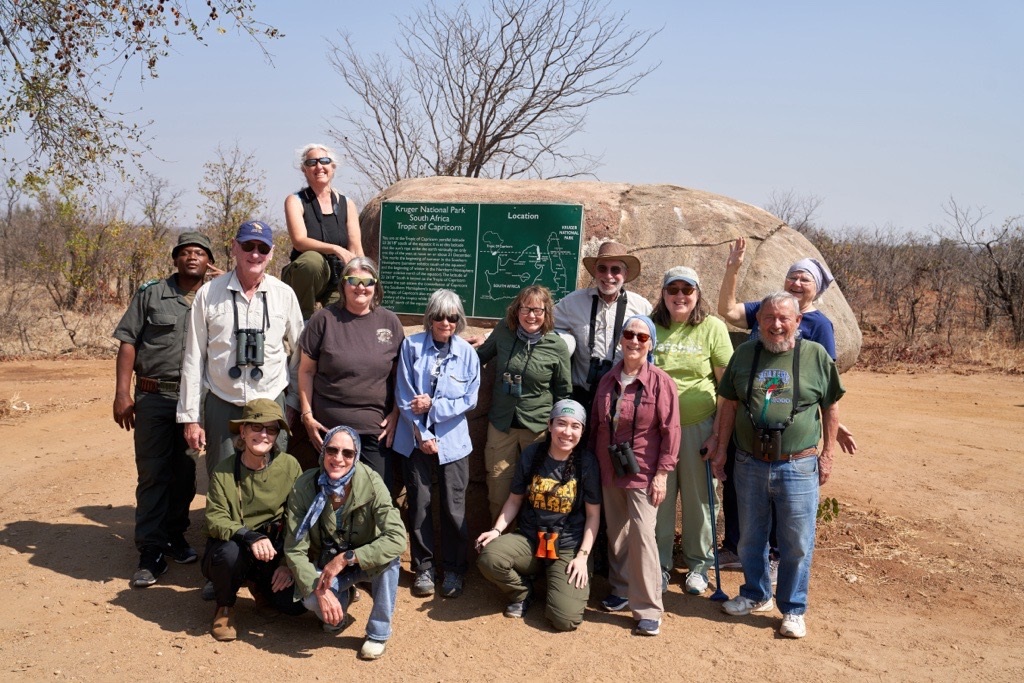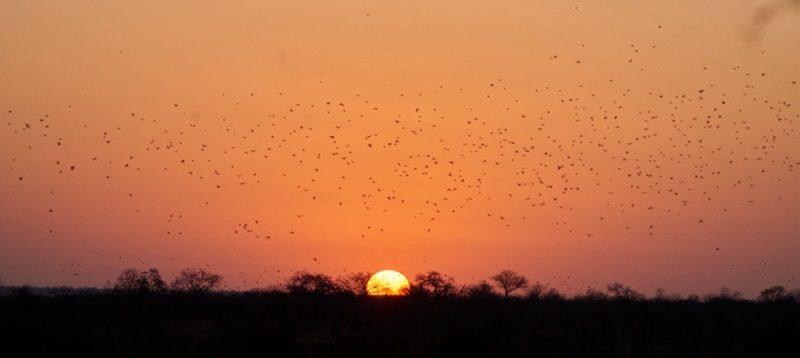
My friend and I traveled together from Denver, CO. As we lugged our bags through the Johannesburg airport, a man approached us and asked if we were with OTS. Although we had no identifiable markings as being with OTS, somehow these fellow travelers recognized us, perhaps from our group’s introductory Zoom meeting. I suspected intuitively that our group would share a mindset of curiosity and excitement, and this turned out to be quite true. We had an amazing group of people.
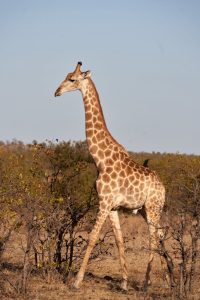
After our flight, in Skukuza, we loaded into the 2 game drive vehicles provided, left the protected electric-fenced perimeter of the airport, and immediately began to see wildlife. Before we reached the Skukuza OTS camp, we had seen elephants, giraffes, zebras, impala, kudu, many kinds of birds, and many more animals. One of our hosts, Pum, explained that there is a joke about the impalas. Because they are so common, and serve as a snack for other animals, they are the “McDonalds” of the park. We began calling them French Fries, which stuck for the duration of the trip.
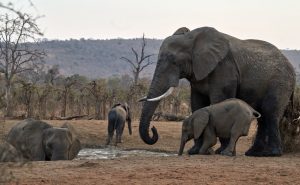
All camps within the park are protected by electric fence barriers. Outside of those barriers, one is likely to encounter large predators such as lions, leopards, hyenas, and the like. (Not to mention other animals that might not be out to hunt you, but might still accidentally bring your life to a premature halt all the same.) Once, while taking a sunset walk around the inside perimeter of an electric fence, we accidentally startled a large male elephant, which had been grazing behind some bushes. As he eyed us, it seemed he was weighing the pros and cons of charging at us through the electric fence. Luckily, instead, he decided to cross the river and take his frustration out on a flock of birds, giving them a spray with his trunk.
We stayed in the OTS Skukuza camp for 2 nights, allowing time for everyone to get adjusted to the new time zone. From there on out, we moved to a new camp almost every night, until staying 2 nights in Mopani. Our accommodations were very comfortable. In the Skukuza camp, I spoke with a research scientist next door, who told me she was studying wildfire mitigation in Kruger. Coming from Colorado and having wildfire concerns in my home state, I was interested to hear about fire management and its effects on the park.
We stayed in the camps of Skukuza, Roodewal, Letaba, Punda Maria, and Mopani. One of the camps, Roodewal, we had all to ourselves. Laurence described Roodewal as “a very primitive site” where we might be without electricity entirely, but it turned out to have its own generator, and all the conveniences we required. We were thrilled. He said after we arrived, “Under promise and overdeliver”.
After Mopani, we left the park -reluctantly, on my part- for Cape Town. The area surrounding the city is stunning, from cloud-draped mountain tops to the oceanside. Human history there is full of difficulty. We learned about what happened during apartheid, firsthand from survivors of that epoch. We went to the District 6 museum and saw the many testimonials by families who were displaced. It was sobering. For myself, I couldn’t help but make comparisons to the current cultural climate in the United States and ponder what might be done to stave off a similar calamity in my home country.
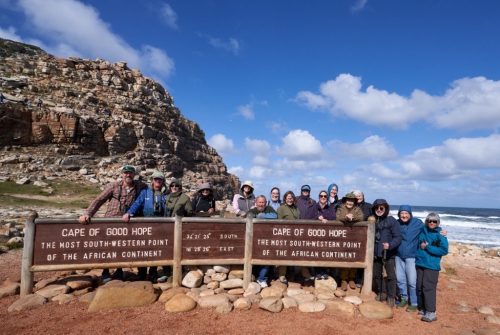
We also had a chance to visit the Kirstenbosch botanical gardens. These spacious grounds are packed with amazing and beautiful plant life. We spotted an owl sitting up nonchalantly in a tree. Many helpful little signs helped us identify plants. We learned about edible and useful plants. We walked over raised platforms that brought us to the level of the tree canopy. The beauty and the chance to learn so much new information created an amazing experience. This could be said to describe the South Africa OTS experience in its entirety as well.
I am grateful to Laurence, Julissa, Shedron, Ali, Pum, Thandeka, Pernille, and all those who contributed to the successful actualization of the trip plans. I love learning new things, and this trip was packed with education. I dutifully checked off all the wildlife I’d never seen before in my Kruger handbook. I gained many life birds. But more importantly, the research being done seems critical to the future welfare of the park, and OTS offers fantastic opportunities for anyone of any age to get involved.
